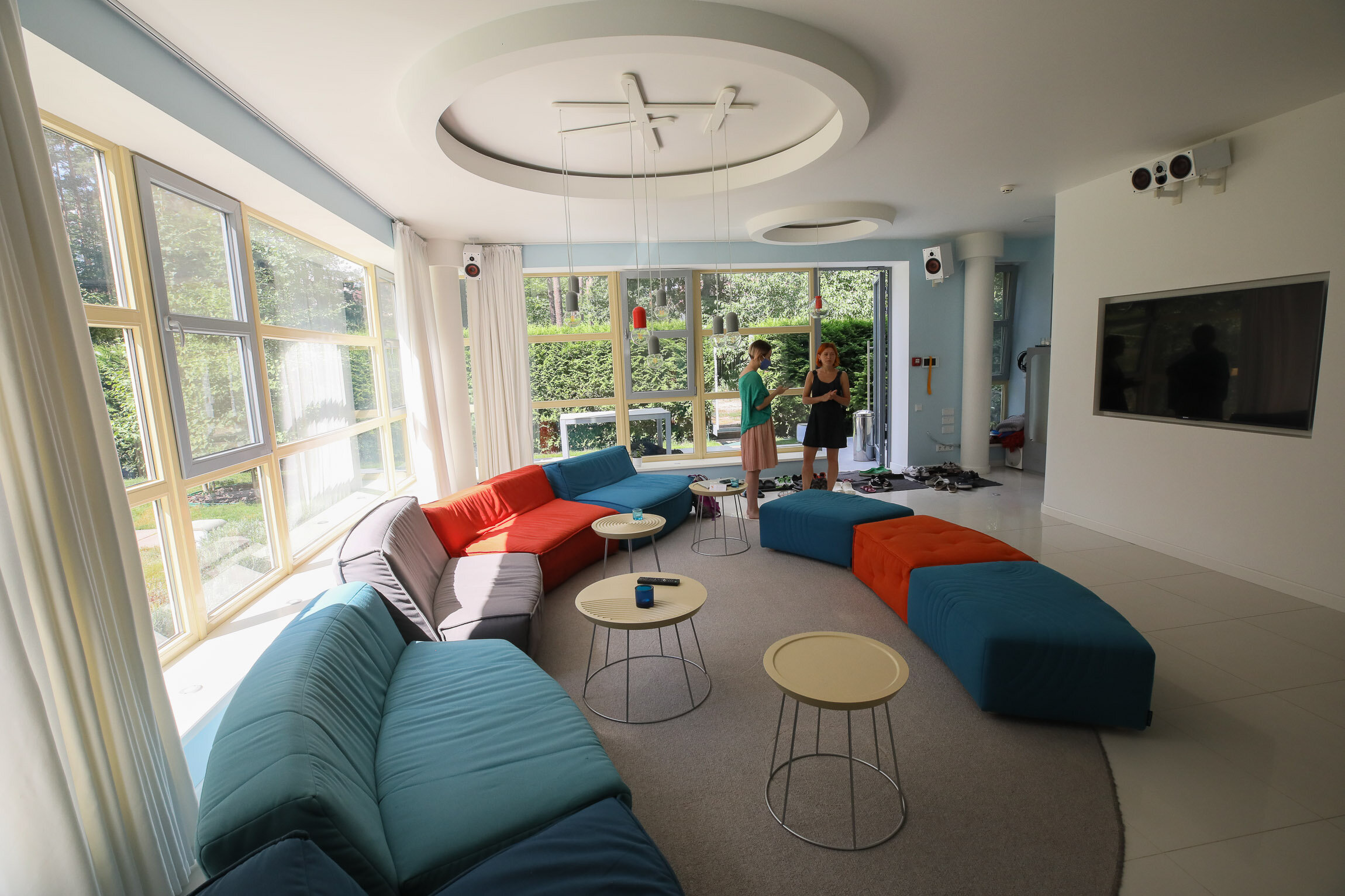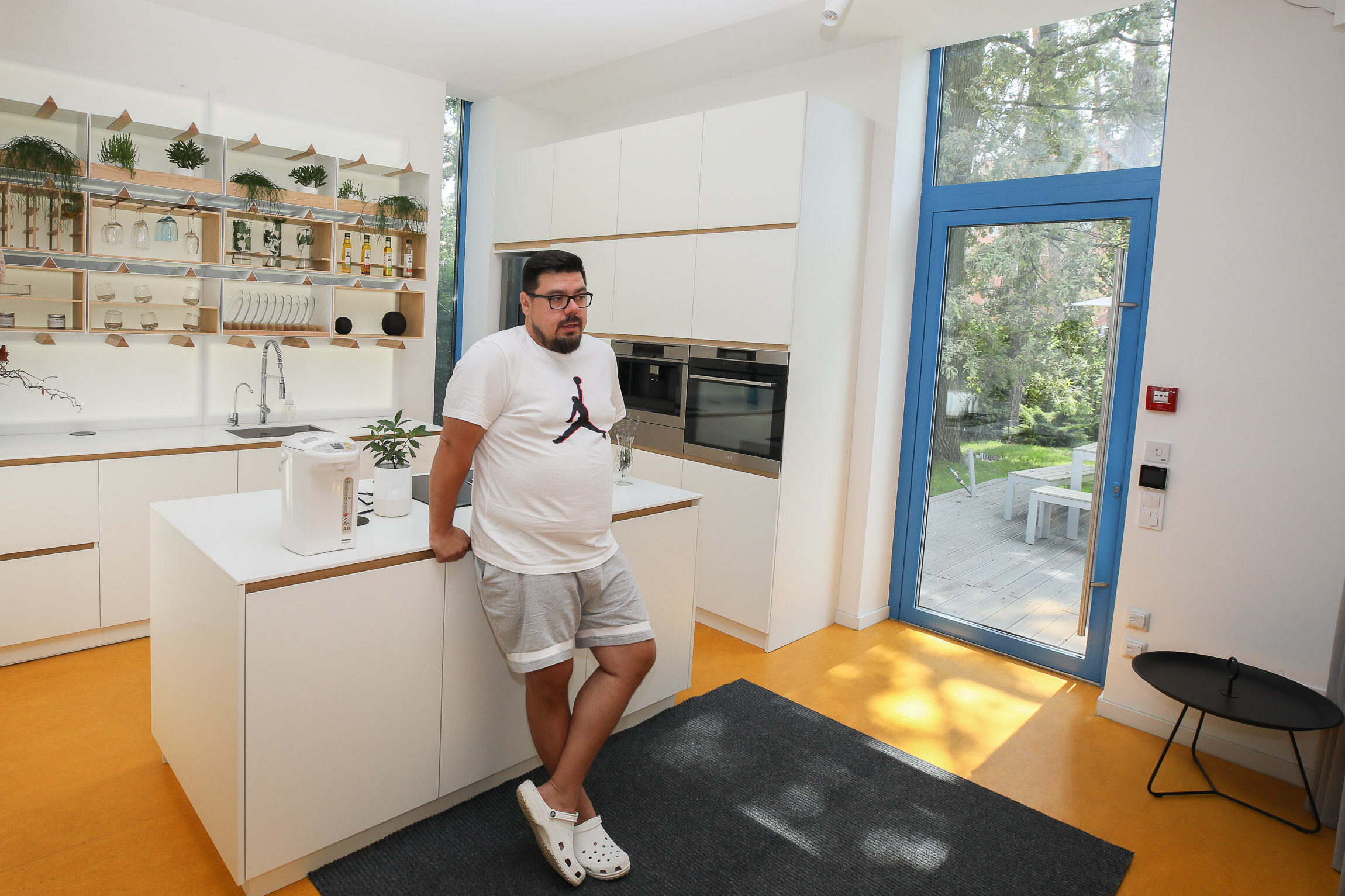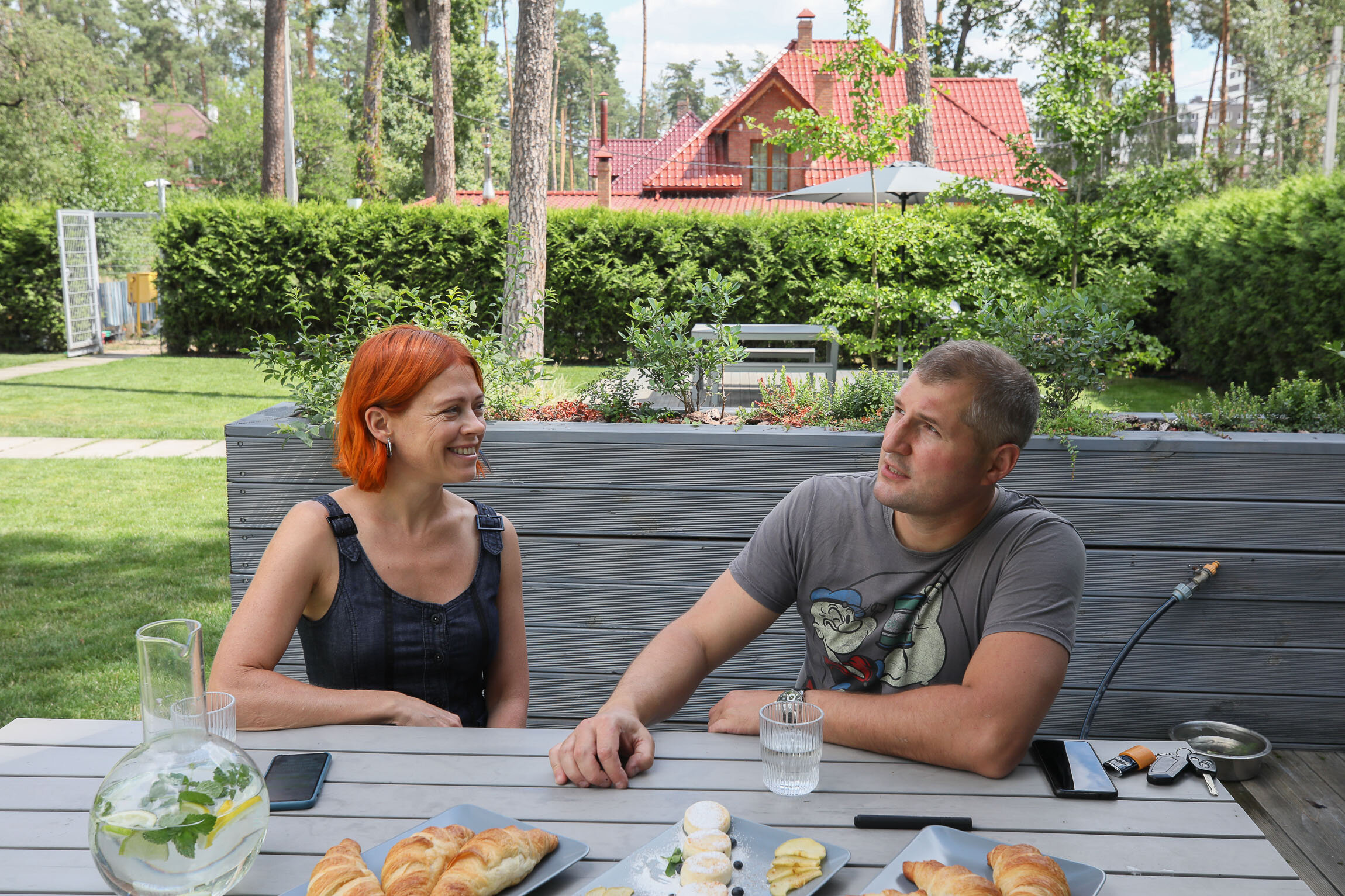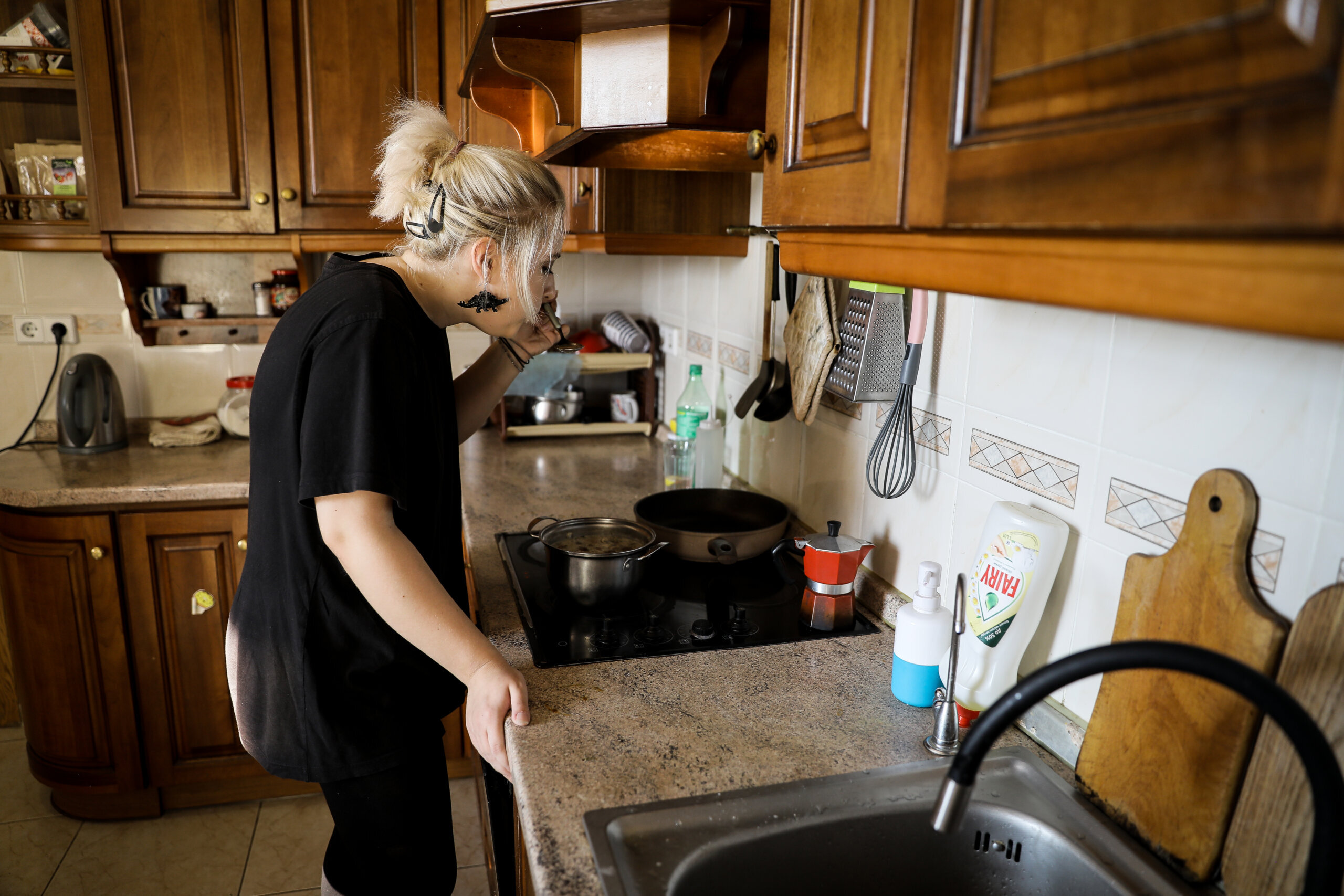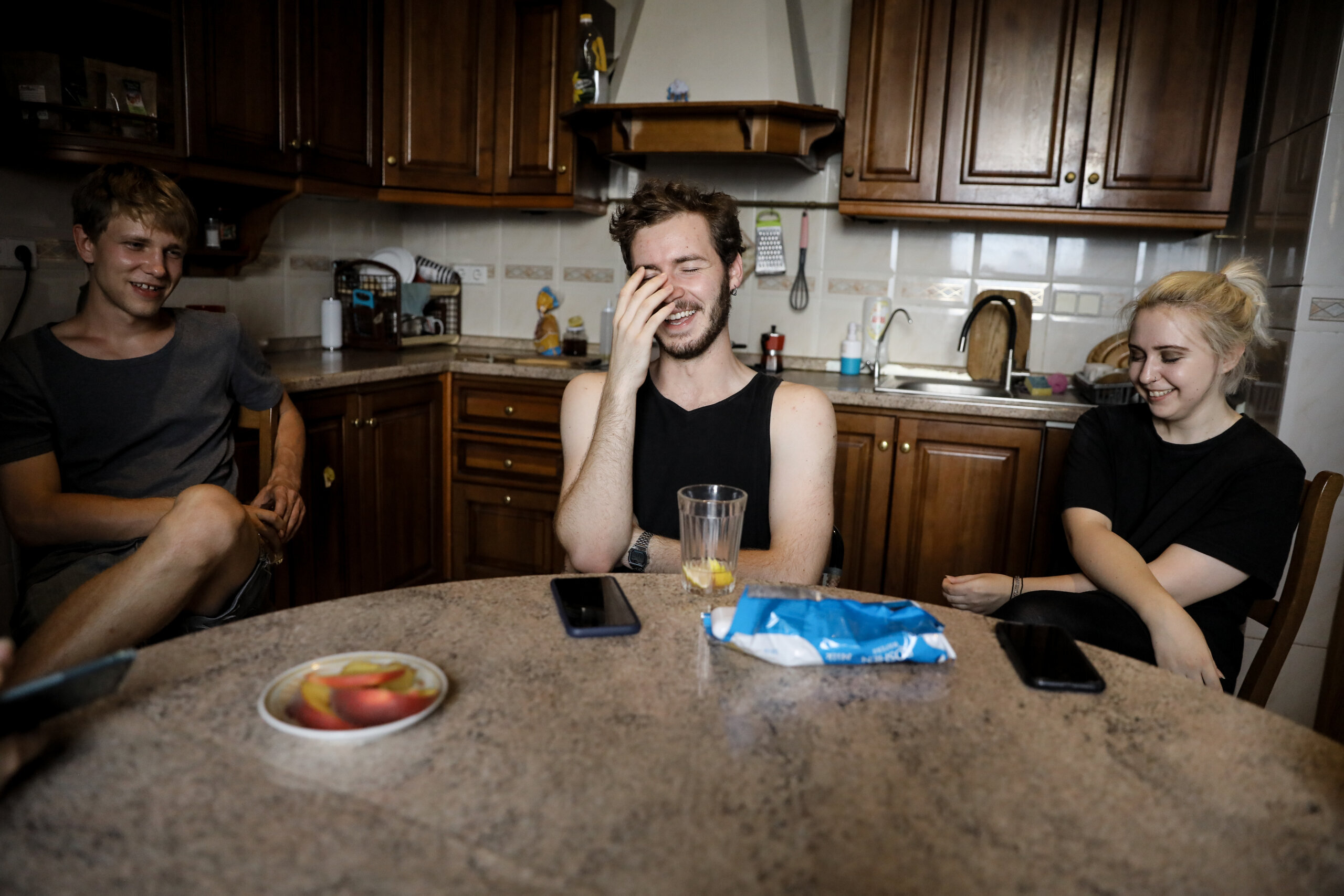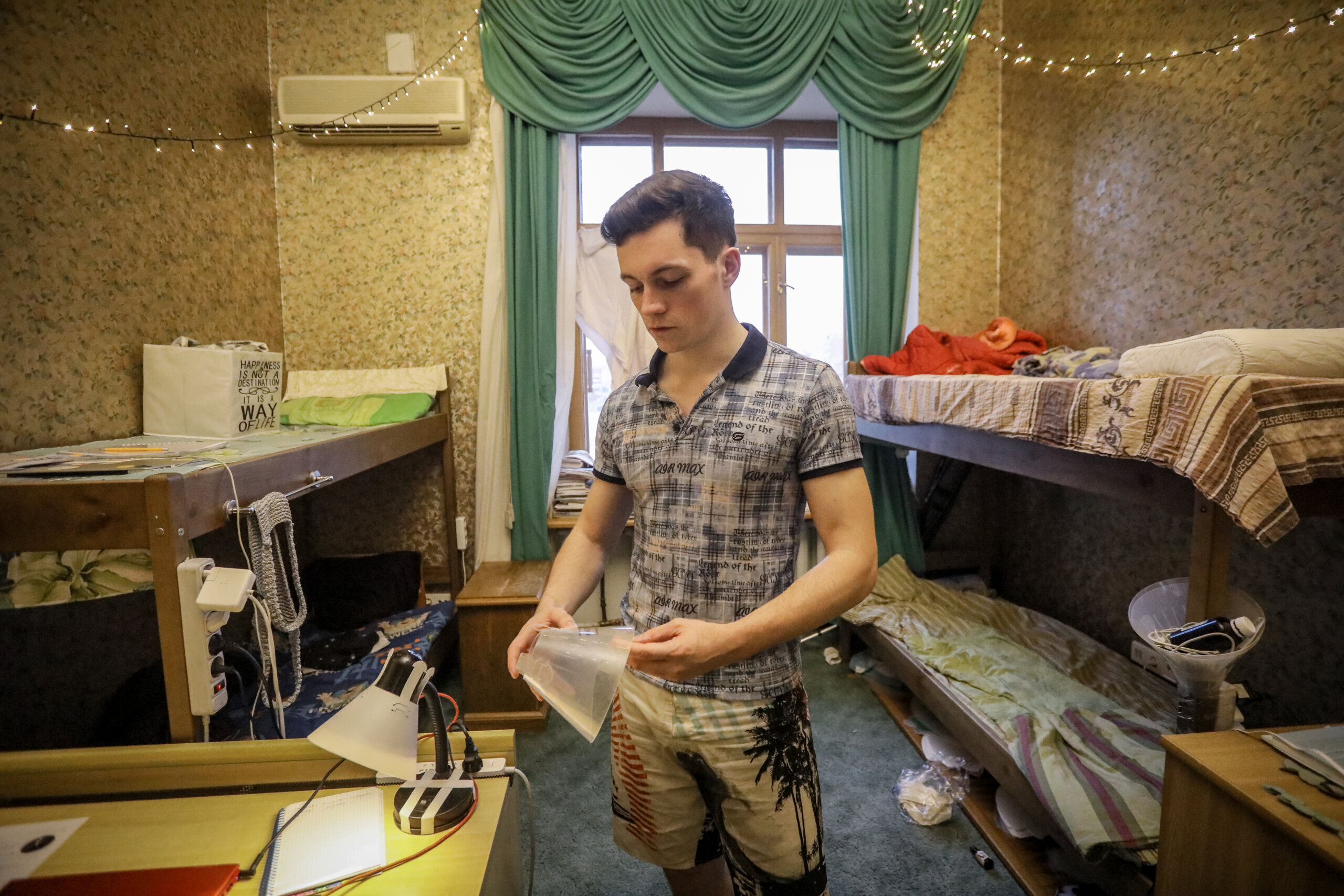When Katerina Safonova moved back to Kyiv after a year of working in Cyprus, she planned to rent a flat on the bank of the Dnipro River. But that rental ended up getting postponed. Soon, she found herself living in a place she never thought she would.
While waiting for her flat, she stayed at a place called Stockholm Studios — something closely resembling a communal apartment building, but called a co-living.
Safonova planned to stay in the co-living for a month or so, but she liked the communal culture so much that she decided to remain there for longer, even though it’s located in Kyiv’s suburbs. It has now been a year and a half since she moved there.
But the co-living offers something an apartment couldn’t: a community and a sense of belonging.
This is the philosophy of such co-livings. And there are already dozens of them in Kyiv and its suburbs alone.
Stockholm Studios
Co-livings are often located in unusual places like in a tsarist-era house, a former factory or a weirdly designed new building.
The co-living Safonova dwells in is an example of the latter. It’s a grey building in the form of a cube with panoramic windows standing in the middle of a pine forest in Irpin, 25 kilometers west of downtown Kyiv.
The “cube” features 14 studio apartments, each of them 30 square meters in size.
Three of them are occupied by the family of Olena Rantsevych and Andriy Kolesnyk, who own the place and spent 10 years building it. However, it’s worth it since the co-living is extremely popular and there is always a line of people who wish to move in.
The co-living offers its tenants the opportunity to attend events like Argentine tango nights and art house cinema evenings, master classes and even therapy sessions. The co-living founders can invite connoisseurs of the culture of a country to organize an event or chefs who prepare exquisite food.
This is what attracts artistic people from different spheres of life, including yoga instructors, writers and psychologists.
“We call ourselves an ‘intellectual co-living,’” Rantsevych says. “Often co-livings are based in large, expensive cities such as London, Tokyo or in Silicon Valley, where they are alternatives to expensive housing.”
Rantsevych says the spouses had always dreamt of living in a community of kindred spirits. And after they traveled to Germany, the Baltics and Northern Europe and saw how similar spaces worked there, they returned to Ukraine and bought a land plot in Irpin right away.
All the tenants rent the tiny studio apartments for Hr 16,000 ($577) a month, which is a lot even for Kyiv, where the average rent for a one-room place is $480.
“For this money, you can rent a good three-room apartment in Irpin,” Rantsevych says. “People don’t come here for cheap accommodations. We have people coming for people.”
Stockholm Studios has a spacious hall on the first floor, a backyard with deck chairs, a coworking space and a big kitchen for having community meals. Most spaces are well-equipped with made-in-Ukraine furniture. The kitchen of the co-living even got a prestigious Red Dot Award for design. The walls are decorated with paintings made by Rantsevych and her mother and photos of Ukrainian ports.
The house is energy-efficient: It has a CO2 sensor that automatically opens windows for ventilation. The floor in the events hall — which is also a coworking space — is made of natural materials.
Married couple Julia Dykaya and Rost Dykoy and their 17-year son have been living here on and off for four years. He is a stylist and she is a writer.
The husband says that he feels like he is in the company of old friends at the co-living, and he admires the colors of the place.
“You come here and, for a day, you’re looking at one point, thinking, disconnected from social networks and the noise of the city. And only on the second or third day, you feel how cool it is and you, in fact, are diving into Narnia, crossing through some portal and appearing in a clean, calm place where nothing annoys you,” Dykoy says.
The spouses say that time spent here is productive. In collaboration with other residents, Dykoy is developing a clothing brand from eco-friendly or recycled materials, which is also high-tech. Dykaya has written a book and is finishing another.
All residents of Stockholm Studios say that it’s a perfect place both to work and relax. Most of them come live here for a short time, but then extend their stay for much longer.
Chain of central co-livings
A network of co-livings called Vilnyy (“free” in Ukrainian) stretches around the whole center of Kyiv. Despite being a co-living like Stockholm Studios, it has an absolutely different format and looks more like a hostel than a communal apartment building — people rent beds there, not apartments.
Vilnyy position itself as “a co-living network for active youth” and it is mostly students who live there.
Today, the network consists of eight co-livings in Kyiv and constantly opens new branches. One of its co-livings is located at 14 Kropyvnytskoho Street on the fourth floor of a tsarist-era building with a picturesque view of Besarabsky Market. Seventeen people live there.
It has a high ceiling, big rooms and even bigger halls where tenants work and chill out. As its cofounder Georgiy Dekhtyarenko says, the bedrooms with bunk beds are used only for sleeping and storing the residents’ stuff.
“We kick people out of the rooms. You shouldn’t sit in the rooms, you should communicate,” says Dekhtyarenko.
According to him, “changemakers” live in his co-livings — people who work in different spheres, study in different universities and want to make a difference in the world. In the co-livings of the Vilnyy network, a medic, a journalist, a social media specialist can gather in the same place at the same time. Recently, one guy had his stitches removed with a scalpel in the co-living.
“Here people reinforce each other,” Dekhtyarenko says.
There is always a line of people who want to live in the co-living. They fill out the application, then have an interview and then they can live there for one month, a trial period for both tenants and landlords.
The only condition for living here is being an “active” person from 17 to 30 years old.
All Vilnyy’s residents have to follow some traditions and rules, and each branch appoints a “sotnyk,” a person who monitors the execution of these rules. One of the main traditions is Monday community meals, when tenants talk with each other and share ideas, and split household chores.
Tenants of Vilnyy always take part in social and volunteer projects. For instance, during the strict lockdown, co-livers invented a machine for making face mask, which are required to wear in public places in Ukraine to prevent the spread of COVID-19.
Accommodation at Vilnyy costs $130 per month. As the founders say, it’s an affordable price for a bed in the heart of Kyiv. But they don’t search for people purely interested only in cheap housing. First of all, they try to select people who can contribute to the community.
Dekhtyarenko says that what they do is hardly profitable. They are de facto subletting the apartments, so they have to pay $1,000–1,500 rent a month for each co-living. They also have to pay staff salaries and invest in expansion.
However, there are some problems. Not all landlords agree to sublet.
“Out of a hundred apartments we reviewed, only one or two owners agreed to rent us an apartment,” Dekhtyarenko says. However, he adds, tenants often managed to change the owners’ opinions about the sublet with their behavior — they are always polite and neat.
One landlord changed his opinion when he saw that the nuncio — a Vatican ambassador to Ukraine — came to his flat, to the co-living, for a meeting with the residents.
Moreover, sometimes landlords may refuse to sign a contract suddenly. Once it happened, and 12-13 people were forced to sleep on the floor in another co-living along with other residents for three weeks.
Another incident happened in their first co-living on Lukyanivska Street. Four months after the opening, the residents moved out all at once. That happened because of a “four-month crisis”, Dekhtyarenko says. Since the co-living’s sotnyk didn’t pay much attention to teambuilding, tension among the residents rose until it reached an emotional burst.
Additionally, for three months, people slept on mattresses on the floor, but it wasn’t the reason for them moving out.
“And when we bought the beds a month later, everyone moved out,” Dekhtyarenko says. We are “not financiers, but amateur hipsters,” he adds.
The cofounders claim they offered these tenants to refund their money, but only one person accepted it.
All in all, despite some issues, all people are glad and proud to live here, according to Dekhtyarenko.
“Living in Vilnyy is a must-do. Climb the mountain, listen to a concert of organ music and live in Vilnyy. This is something that you feel but can’t explain.”
The owners of both co-livings — Stockholm Studio and Vilnyy — plan to expand their networks. Vilnyy opened its last branch in the beginning of August. Stockholm Studios plans to open its second co-living next to the current one. It will be in a different style.
It’s cofounder Rantsevych started to work as an ambassador for nonprofit Co-Liv to share the ideas of shared living around the globe. She believes that, in 5-10 years, co-livings will become extremely widespread, including in Ukraine.

